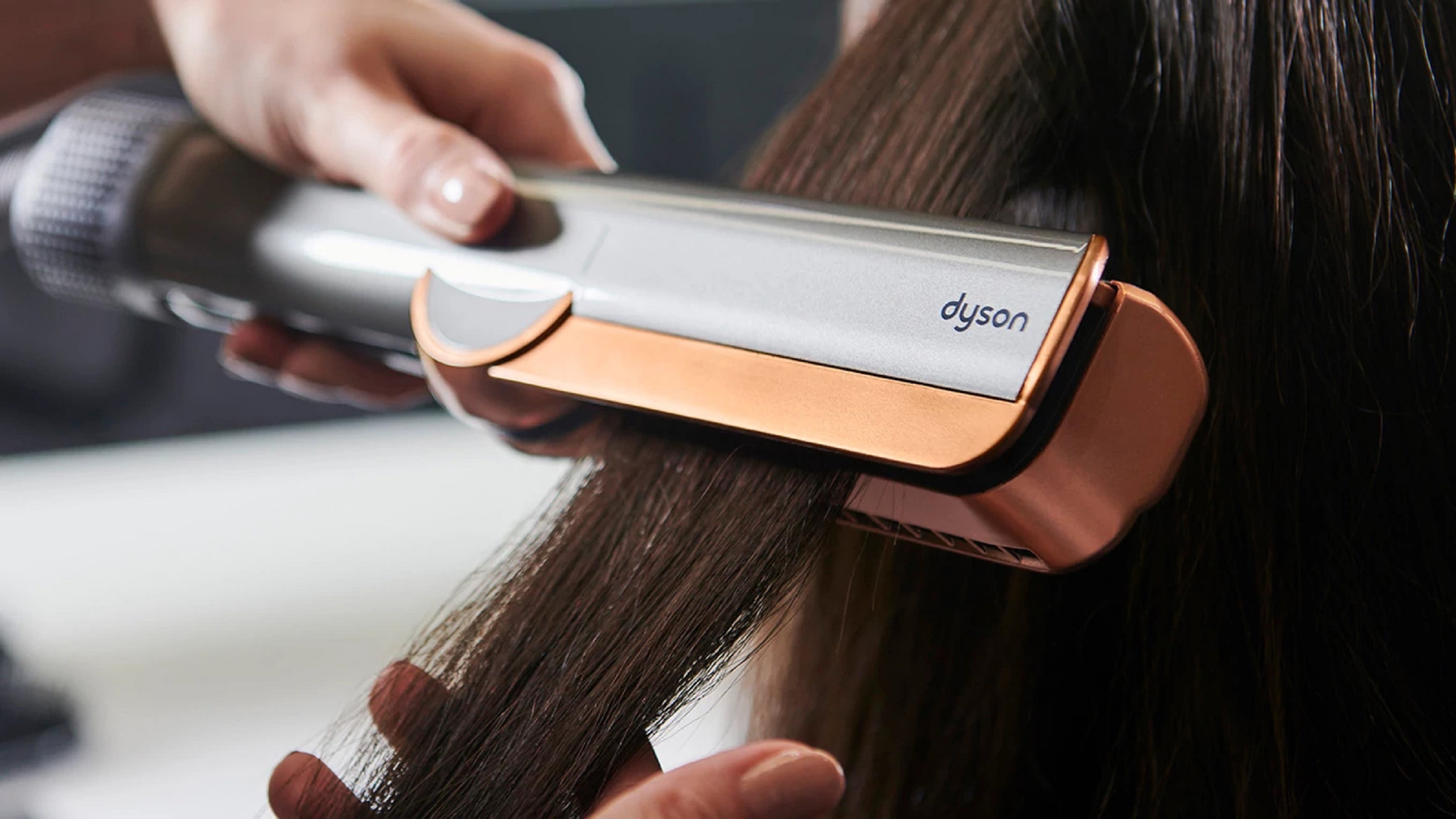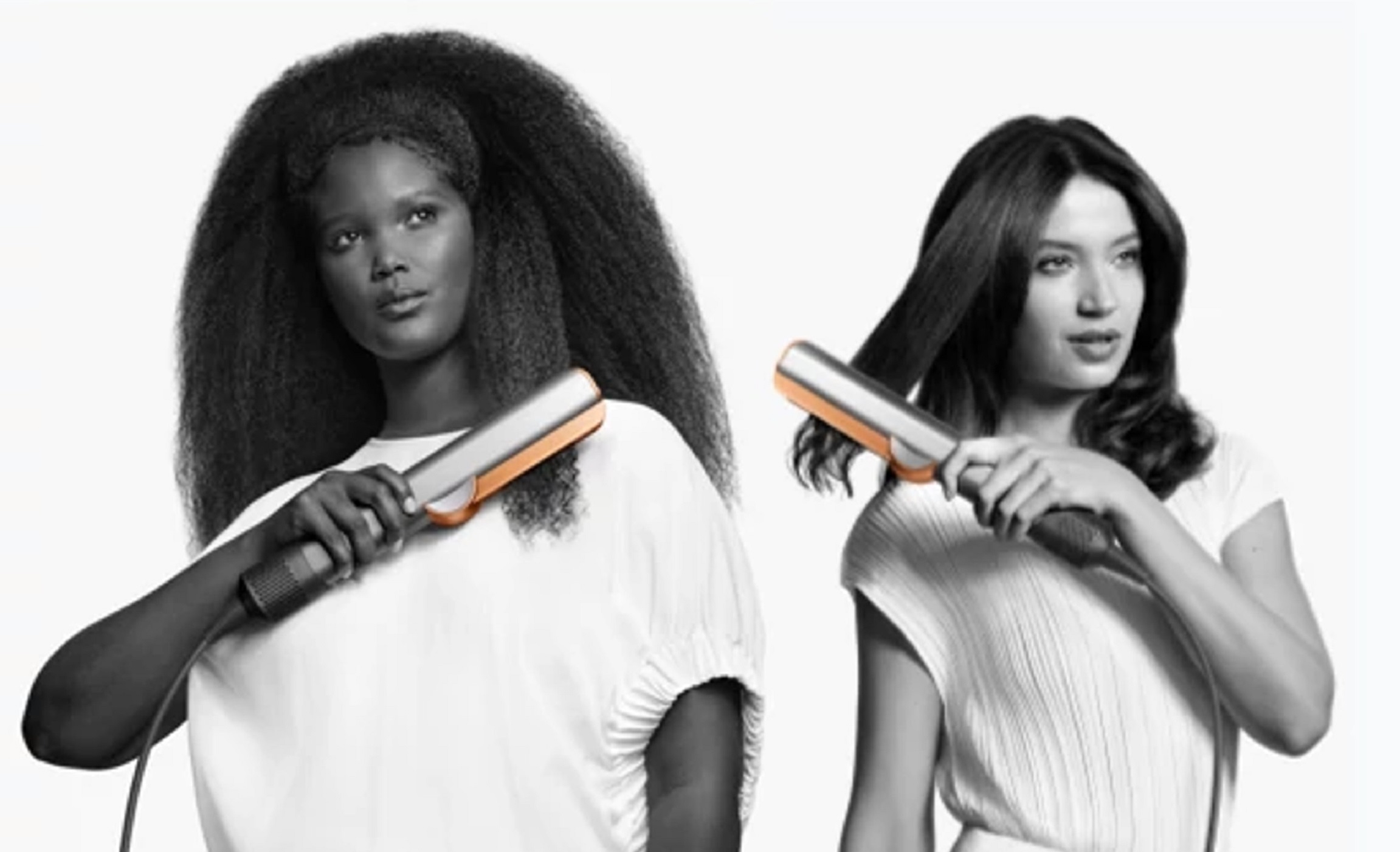The Dyson Airstrait uses only air to straighten your hair – seriously
Dyson reinvents the science of straightening hair

More than three years since it launched its last hair styler – the cordless Corrale in 2020 – Dyson is back with the release of a new hair tool called the Dyson Airstrait.
Dyson's hairdryers feature on our list of the best hairdryers, and the Airstrait, which is part-straightener, part-hair dryer, is the latest in a growing number of wet-to-dry stylers that promise to dry and style your hair in one movement.
It looks like a regular pair of straighteners yet instead of hot plates, the Airstrait combines two blades of hot air – one from each arm – to create a high-velocity jet of air that dries the hair as the styler is passed over each section.
In Wet mode, which, as the name suggests is used to take your hair from wet to dry, you can choose from one of three temperature settings – 175F/ 80C, 230F/110C and 285F/140C. Fine hair that's prone to damage, or hair that errs on the side of being naturally straight, will benefit most from the lower setting, while the hottest setting is ideal for thicker, curlier hair types.
In Dry mode, the Airstrait offers two temperature settings – 230F/120C and 285F/140C – and two speed settings, low and high. This mode is used to restyle day-two hair. For example, if you washed your hair yesterday and don't want to wash it again today you can use Dry mode to bring your style back to life.
You could also use a regular pair of straighteners to create a similar effect but, in my experience, this doesn't tend to bring back the bounce and movement you get when your hair is freshly dried. It can also make any greasiness look worse, not to mention the fact that it's exposing your hair to potential heat damage from the hot plates. Damage that Dyson claims you don't get when using the Airstrait.
If you find your roots are still damp, you can then switch to the Root Drying mode, which uses a separate, external air vent to blast hot air at the roots, as well a Cool Shot mode to add shine to finished look.
Sign up for breaking news, reviews, opinion, top tech deals, and more.
The Dyson Airstrait straightener is available now in the US, and will be released in other regions in the coming weeks and months. Release dates and pricing for the UK and Australia are yet to be announced.
If you prefer to dry your hair rather than style it, then head to our best hairdryers buying guide for our top picks – and perhaps the Dyson Airstrait might feature on that list once we've had the chance to get hands-on with it.

Opinion: Dyson innovates again, and I'm missing the Airstrait already
There are few brands that seem to generate as much hype as Dyson, especially when it comes to the launch of new hair tools.
The Dyson Supersonic launched to great fanfare back in 2016, due to its advanced engineering and unusual shape, and the Dyson Airwrap has more than 4.4 billion searches on TikTok alone.
There's no denying that this partly stems from the fact that Dyson's products are pricey, but it's also due to the innovative way in which Dyson approaches new products.
On first impressions, I expect the Airstrait will follow suit.
It's not the first wet-to-dry styler ever to be released – GHD released the Duet Style earlier this year, but the difference is that the Airstrait uses solely hot air, where the Duet Style combines hot air and hot plates.
It looks like a large pair of straighteners and, as a result, is as intuitive to use. You pass sections of hair between the arms of the Airstrait slowly as tension rods hold it still, and a directed flow of hot air removes moisture.
On my fine, towel-dried hair I was able to take a single section of hair from wet to completely dry in just two passes. I imagine it will take more passes on thicker, curly hair, but that's also where the different drying temperatures come in.
The finished look on Wet mode was smooth but not flat; my hair had body and movement, and looked more natural than a hot-plate straightened style.
That said, although Dyson largely markets the Airstrait on its wet-to-dry styling feature, this isn't the best thing about it in my opinion. During my brief time trying the Airstrait, the Dry mode felt like it will be much more useful to me.
This is because I feel it's genuinely different and unique, and it directly appeals to my needs.
I've been trying to wash my hair less, to give my hair and scalp a rest, but the downside is that I don't know how to effectively style my day-two (or sometimes day-three!) hair.
I've tried misting it with water and redrying it with a hot brush – this ends up making my hair feel greasier, and defeats the point of trying to improve the health of my hair somewhat. After all, hair is at its weakest when it's wet.
I've tried straightening it, but this introduces extreme heat and knocks out any body or movement, leaving my hair limp and flat. As a result, my go-to style is a ponytail which brings its own problems by pulling at my hairline.
The Dyson Airstrait in Dry mode solves almost all of these woes. It restores body and bounce without any greasiness, while subjecting my hair to much less damage. All while allowing me to wash my hair less.
And for days when my second-day hair looks passable and I don't need to fully use Dry mode, the Roots Drying mode is then useful for calming any frizz and adding shine.
The Airstrait is an expensive piece of equipment, and it doesn't offer a huge amount more than a hairdryer, all things considered. It does also feel slightly gimmicky, which is always a problem when a product is one of the first in a new category. However, the benefits it does bring, and the engineering that has gone in to it, will likely make it a popular choice among many people, me included. And now I know about the benefits of Dry mode, I've missed it every time I've needed to style my day-two hair since.

Victoria Woollaston is a freelance science and technology journalist with more than a decade’s experience writing for Wired UK, Alphr, Expert Reviews, TechRadar, Shortlist and the Sunday Times. She has a keen interest in next-generation technology and its potential to revolutionise how we live and work.